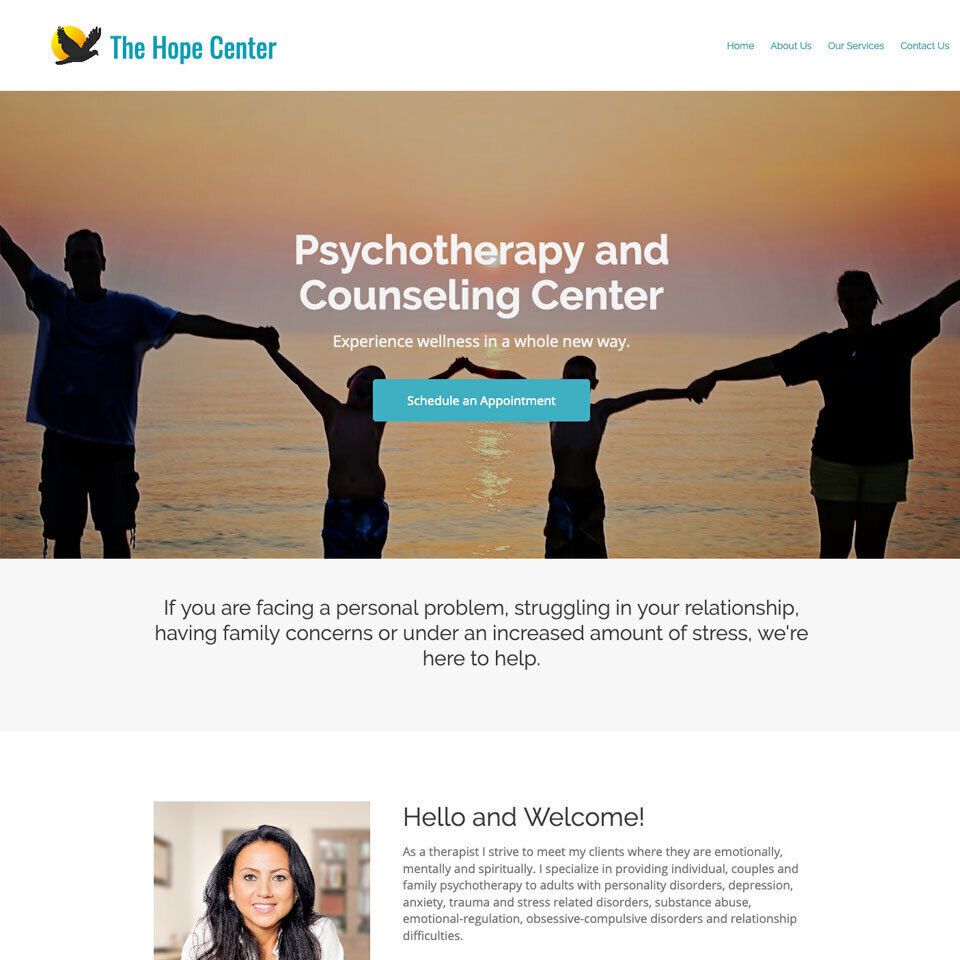Clinical psychologist David Feldman, Ph.D., and I conducted a study that showed how putting goals, pathways, and agency into active steps can significantly increase people’s hope (Feldman & Dreher, 2012).
Here’s how you can use these three steps to build your own hope.1. Goals
Choose a goal you’d like to achieve in the next six months. Make it an
approach goal like “I want to be fit and healthy,” “I want to enjoy life,” or “I want to have more friends.” Approach goals (striving for what you want) promote personal well-being while avoidance goals (striving to avoid negative situations) are associated with
anxiety and distress (Emmons, 2003).
Choose your own approach goal, like improving your physical fitness, beginning a new hobby, making new friends, or something else you’d like to achieve. Focusing on this positive goal can not only help you progress in that one area, it can also evoke positive emotions to “broaden and build” your capacity for
happiness, well-being, and success (Fredrickson, 2003).
2. Pathways
Dave Feldman and I asked each of our experiment participants to write down their goal, then write down three steps they could take toward their goal. You can do the same.
- For a fitness goal, you could sign up for an exercise class or begin a walking, jogging, or running practice. Research has shown that regular exercise can improve emotional well-being and even help relieve depression (Penedo & Dahn, 2005; Rethorst & Trivedi 2010). You may want to consult your health care professional before beginning an exercise program, and begin reasonably, walking or running a few blocks at first, then gradually increasing your distance.
- If your goal is adding more enjoyment to your life, you could begin a new hobby. Your steps might include signing up for a class at the local community center, taking that old guitar out of the closet, going to a music store and signing up for lessons, or something else.
- If your goal is to have more friends, your steps might include reconnecting with an old friend with a text, card, or phone call. Or you could begin making new friends by following your interest—taking a class, joining a group at your local church, synagogue, or community center, working for a cause you believe in, or something else.
article continues after advertisement
But choosing three steps is
not enough. Life happens. Unexpected events can throw you off course. We asked our participants to write down a possible obstacle for each of their three steps and an alternate action to deal with each obstacle. You can do the same.
For example, years ago, I signed up for a Saturday morning yoga class. The obstacle was that it was tempting to sleep in on Saturday mornings. My positive alternate action was
friendship. Because my friend Janette was also taking the yoga class, I made it to class because I didn’t want to disappoint her. In another example, my friend Peggy committed to a walking practice around her neighborhood. Her obstacle was rain. So on rainy days, she walked inside the local shopping mall.
3. Agency
You’ll need agency, or
motivation, to keep moving forward. Some ways to build your agency are to:
- Use positive self-talk—tell yourself, “You can do it!”
- Post a motivational quote by your desk or on your bathroom mirror.
- Share your goal with a friend and encourage each other.
- Visualize yourself reaching your goal.
Dave Feldman and I helped our participants build their agency with
visualization. In a guided
meditation, we asked them to close their eyes and visualize themselves taking each step, encountering each roadblock, taking each alternative step, and then happily reaching their goal.
You, too, can visualize yourself taking your own steps, experiencing yourself confronting each obstacle, overcoming it with your alternative, and then feeling the joy of accomplishment when you visualize yourself reaching your goal.
article continues after advertisement
Hope advocate Kathryn Goetzke (2022), has called this three-step process “inspired action.” Through this process, you can plant seeds of hope that will grow like sunflowers, the international symbol of hope, because they turn toward the light. And this process can fill your life with the light of hope and greater possibilities.
References
Emmons, R. (2003). Personal goals, life meaning, and virtue: Wellsprings of a positive life. In C. L. M. Keyes & J. Haidt (Eds.)
Flourishing (pp. 105-128). Washington, D.C.: American Psychological Society.
Feldman, D. B. and Dreher, D. E. (2012). Can hope be changed in 90 minutes? Testing the efficacy of a single-session goal-pursuit intervention for college students.
Journal of Happiness Studies, 13, 745-759,
Fredrickson, B. L. (2003). The value of positive emotions.
The American Scientist, 91, 330-335.
Garland, E. L., Fredrickson, B., Kring, A. M., Johnson, D. P., Meyer, P. S., & Penn, D. L. (2010). Upward spirals of positive emotions counter downward spirals of negativity; Insights from the broaden-and-build theory and affective neuroscience on the treatment of emotion dysfunctions and deficits in psychopathology.
Clinical Psychology Review, 30, 849-864.
Goetzke, K. (2022).
The biggest little book about hope. (2nd edition). New York, NY: Morgan James Publishing.
Hurley, D. B., & Kwon, P. (2013). Savoring helps most when you have little: Interaction between savoring the moment and uplifts on positive affect and satisfaction with life.
Journal of Happiness Studies, 14, 1261-1271.
Penedo, F. J, & Dahn, J. R. (2005). Exercise and well-being: A review of mental and physical health benefits associated with physical activity.
Current Opinions in Psychiatry, 18, 189-193.
Rethorst, C. D.& Trivedi, M. H. (2010). Evidence-based recommendation for the prescription of exercise for major depressive disorder.
Journal of Psychiatric Practice, 19, 204-212.
Rozin, P., & Royzman, E. B. (2001). Negativity bias, negativity dominance, and contagion.
Personality and Social Psychology Review, 5, 296-320.
Snyder, C. R. (1994).
Making hope happen. New York, NY: Free Press.
More references




























